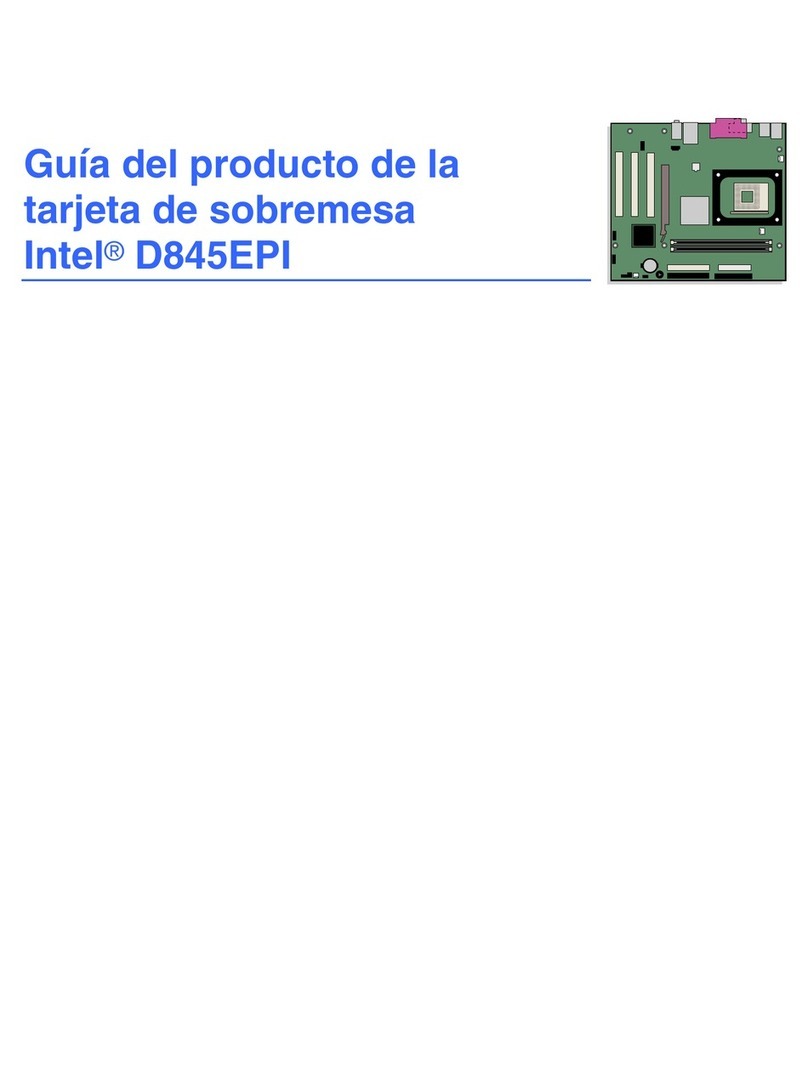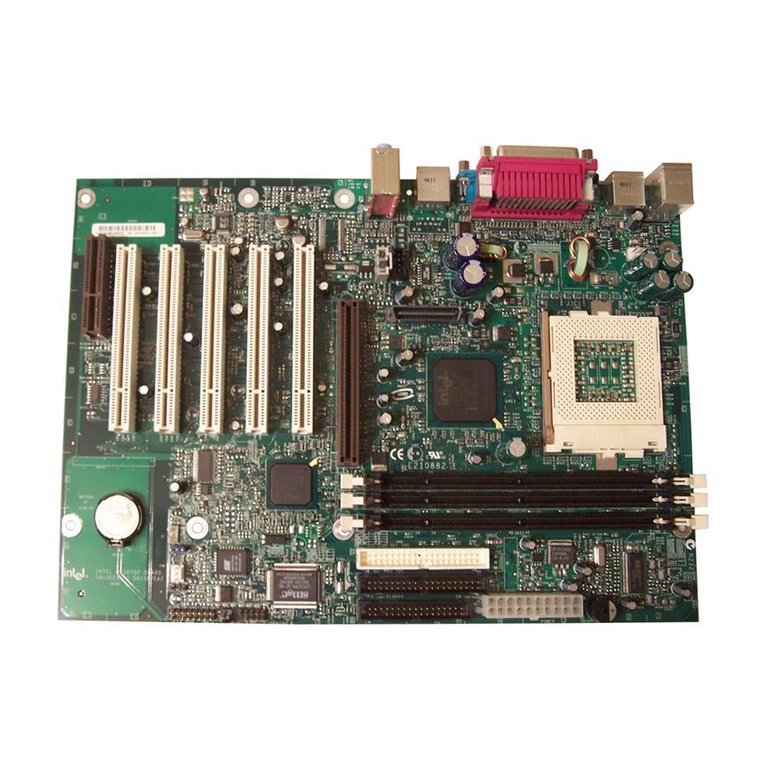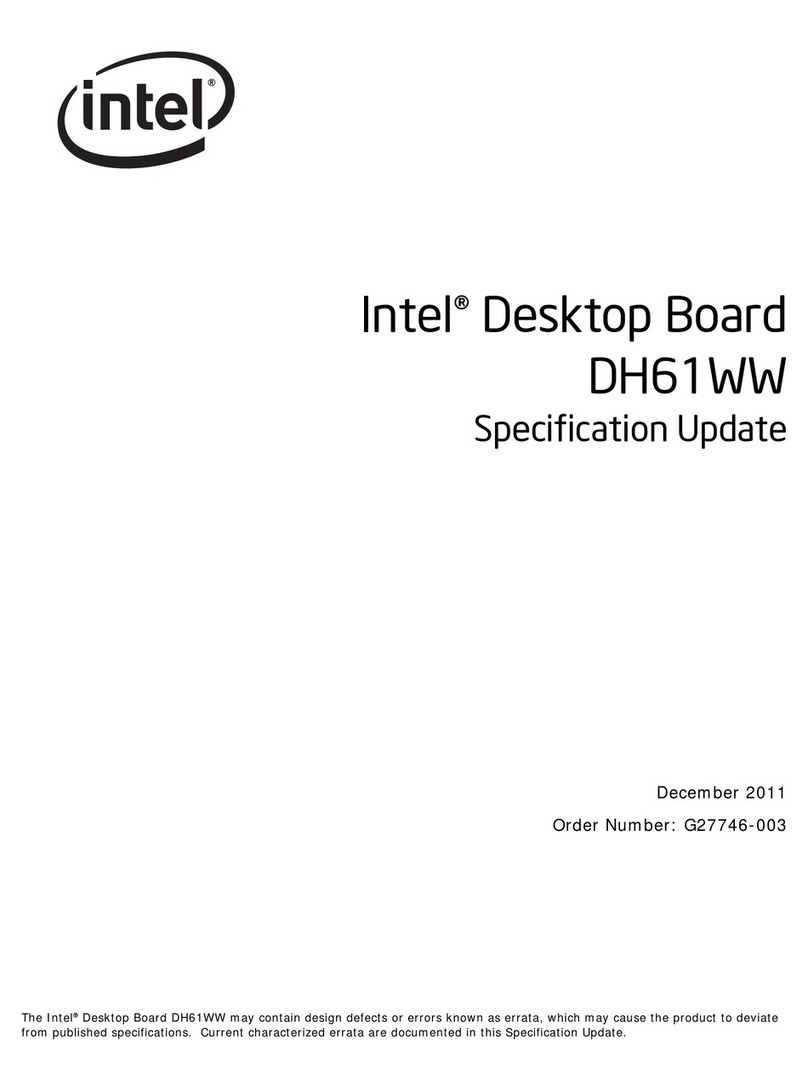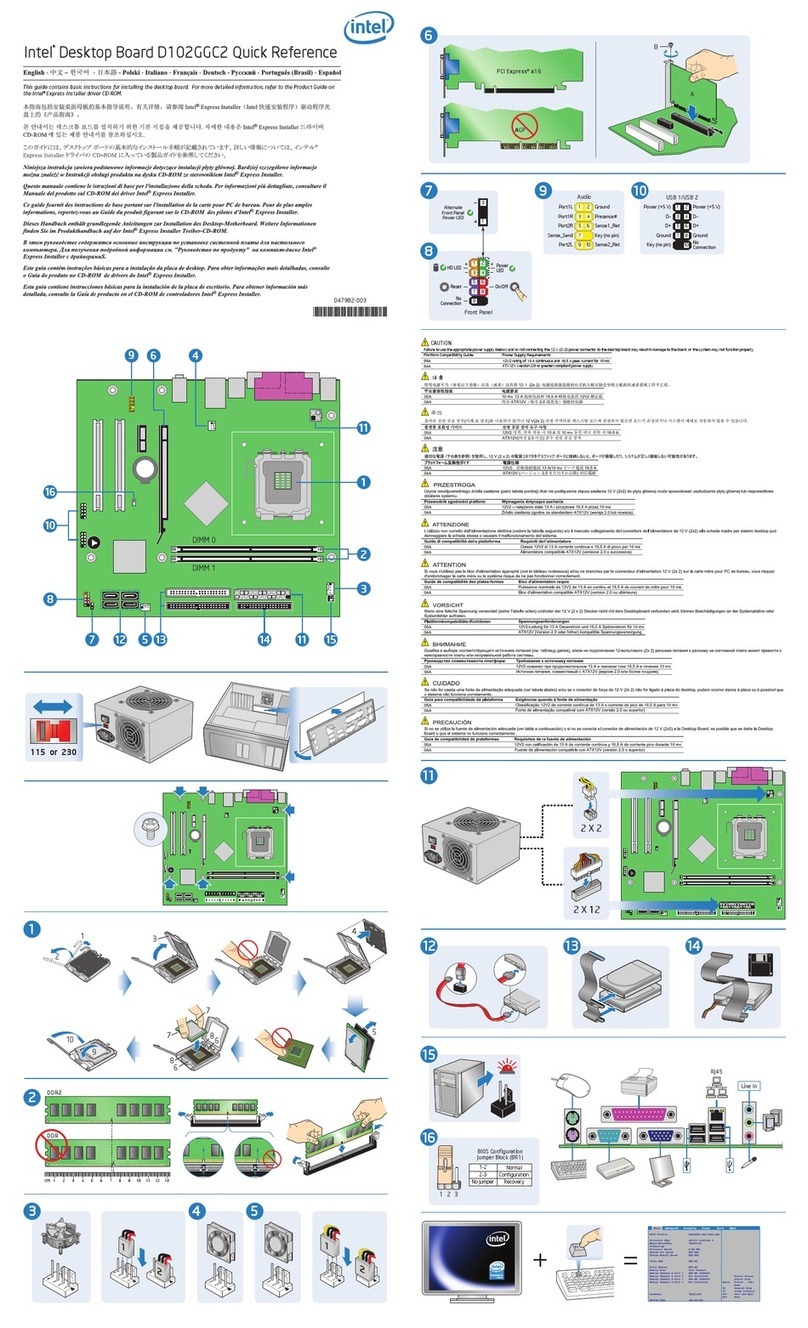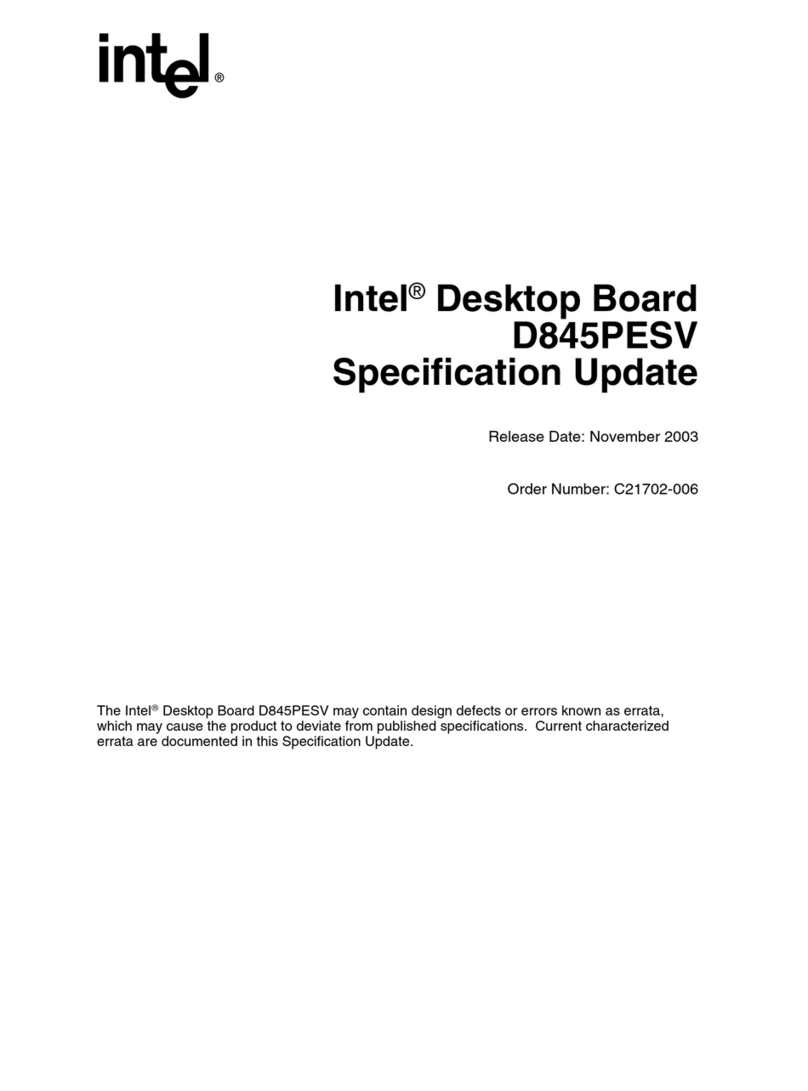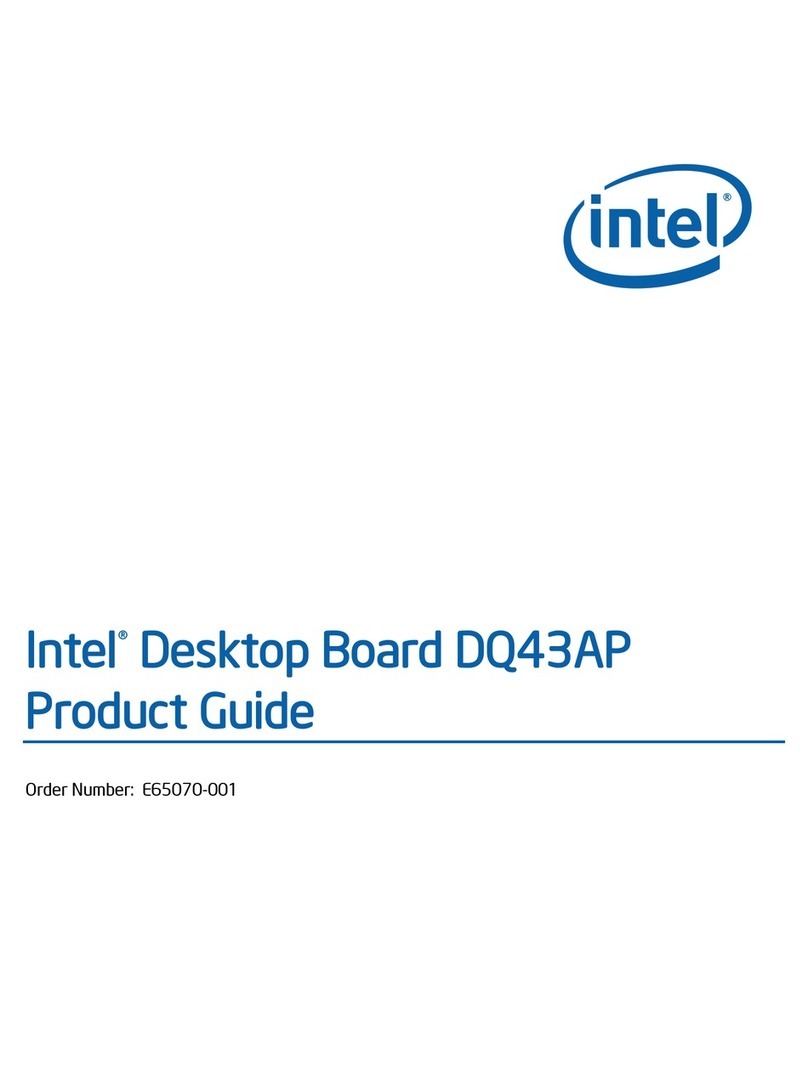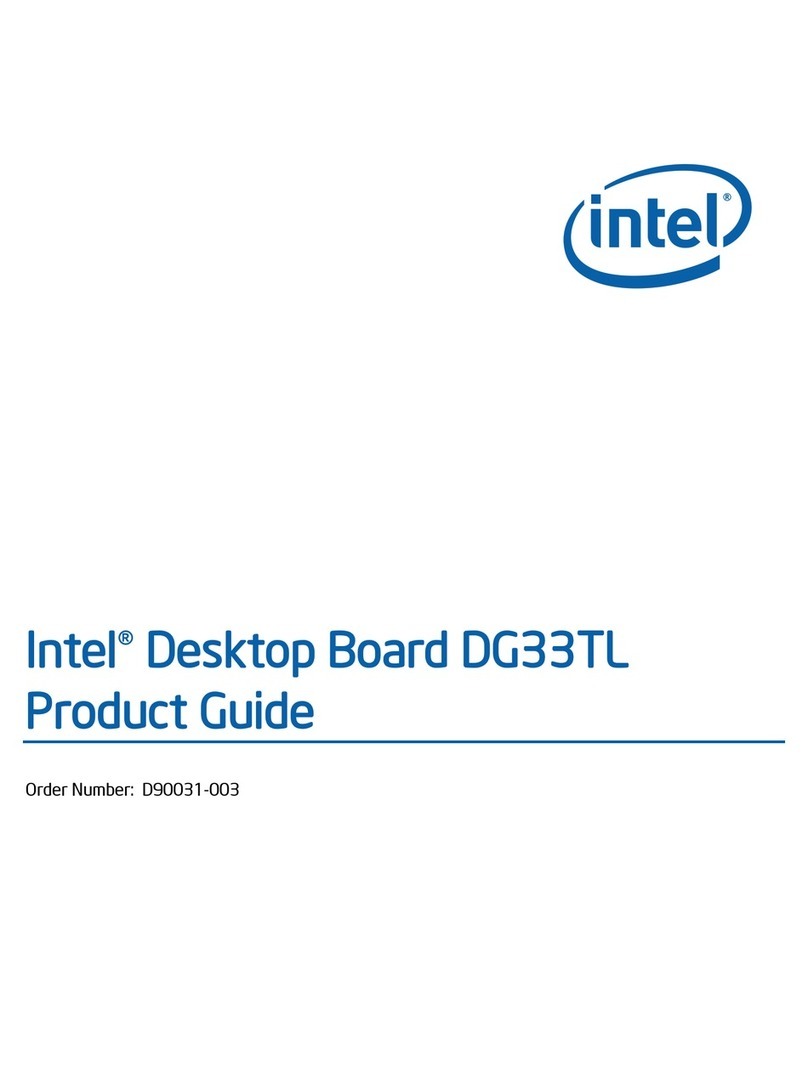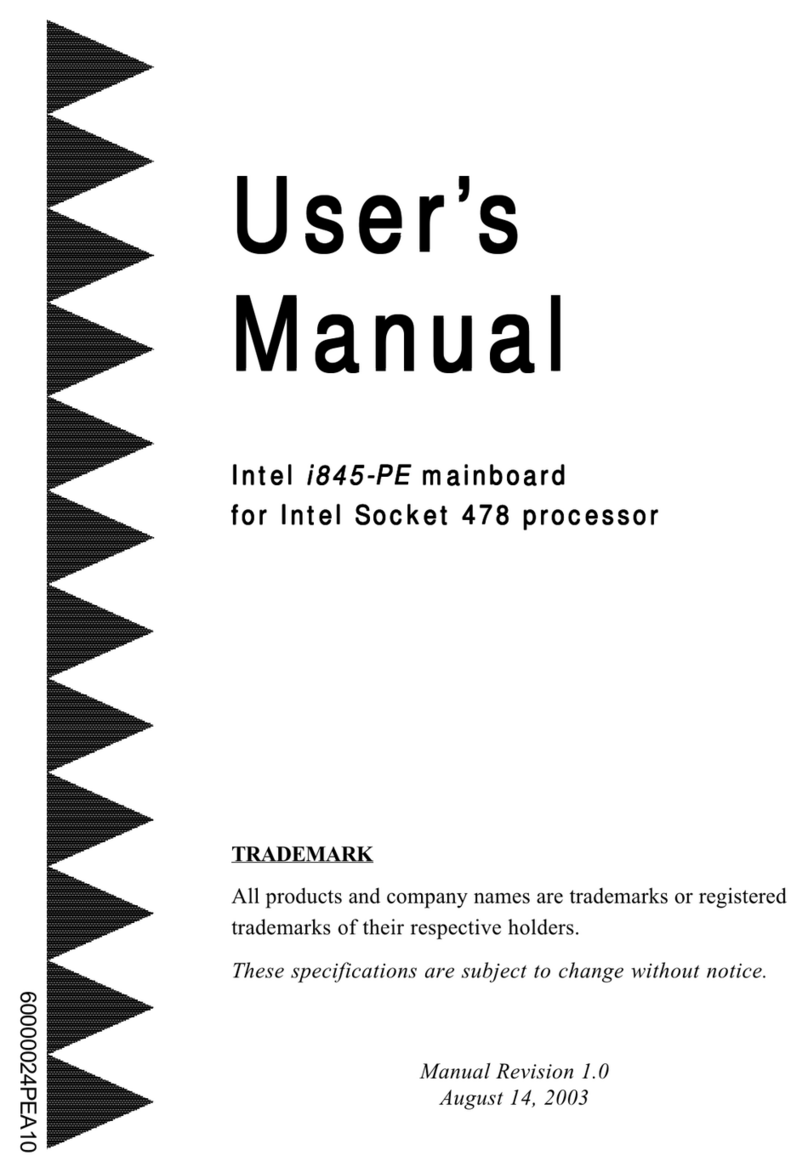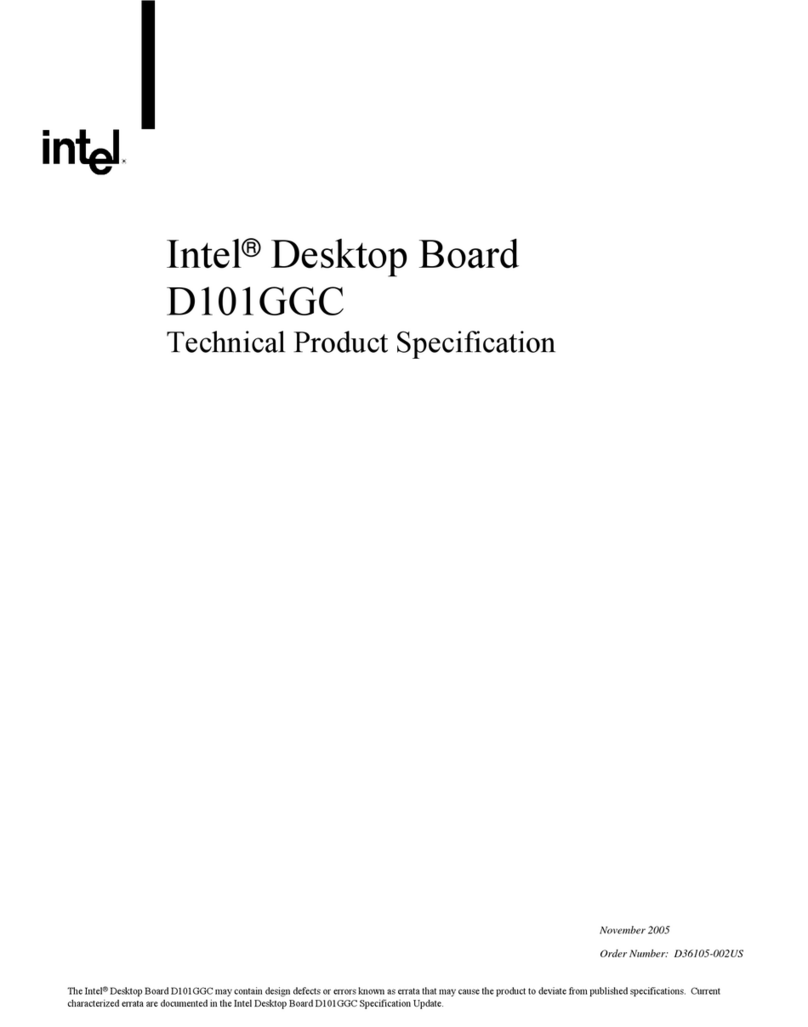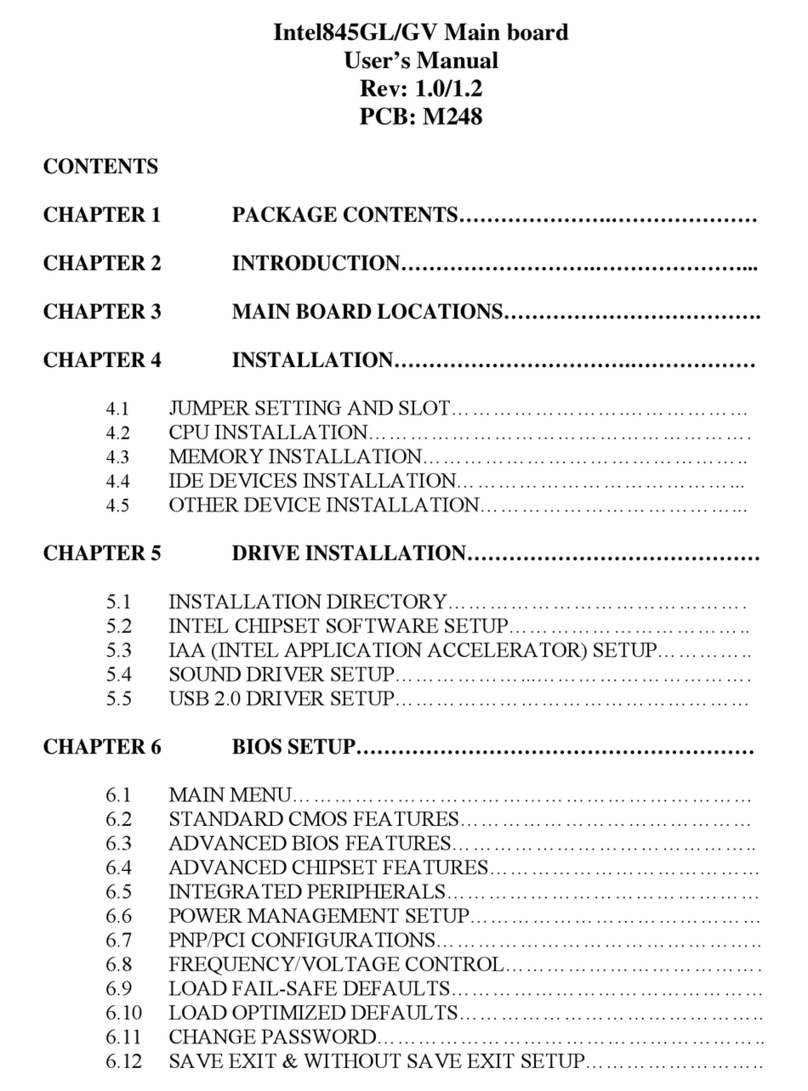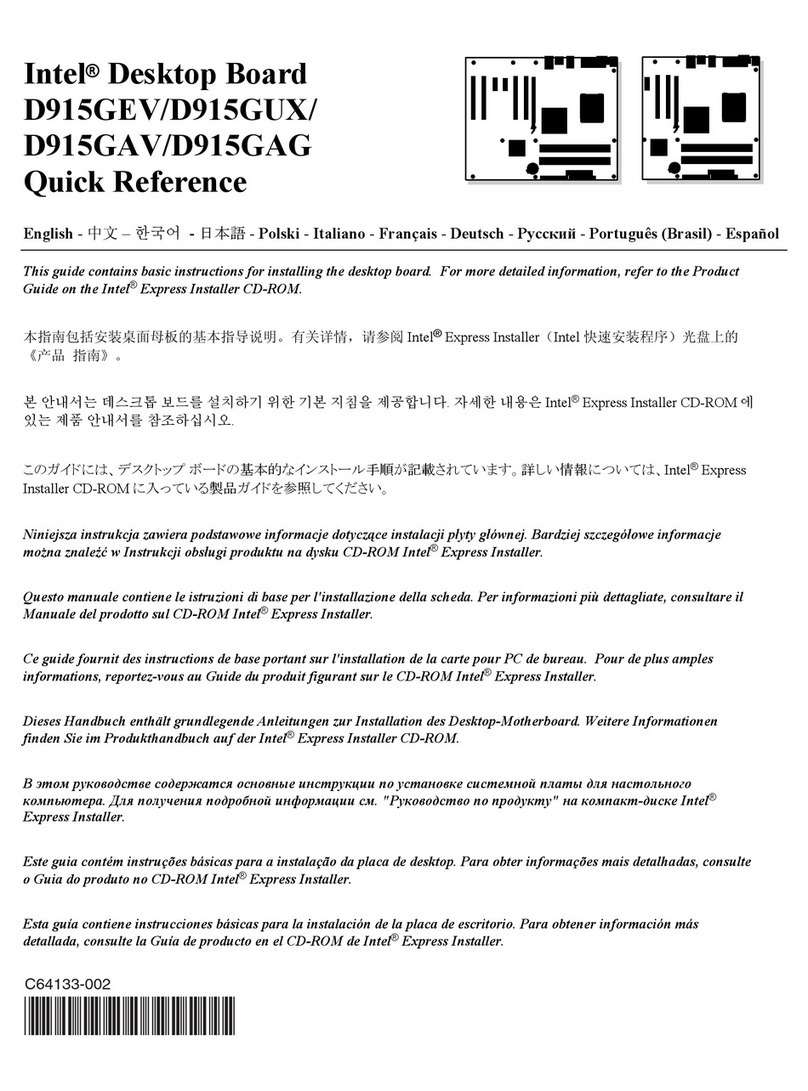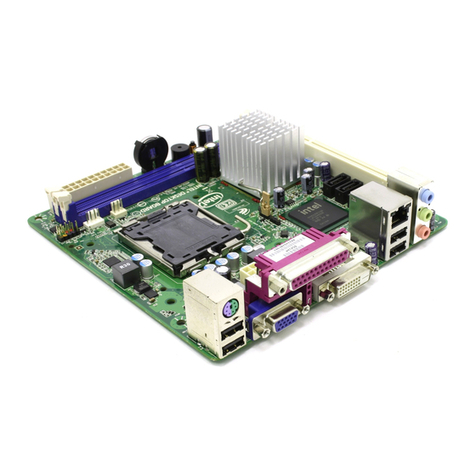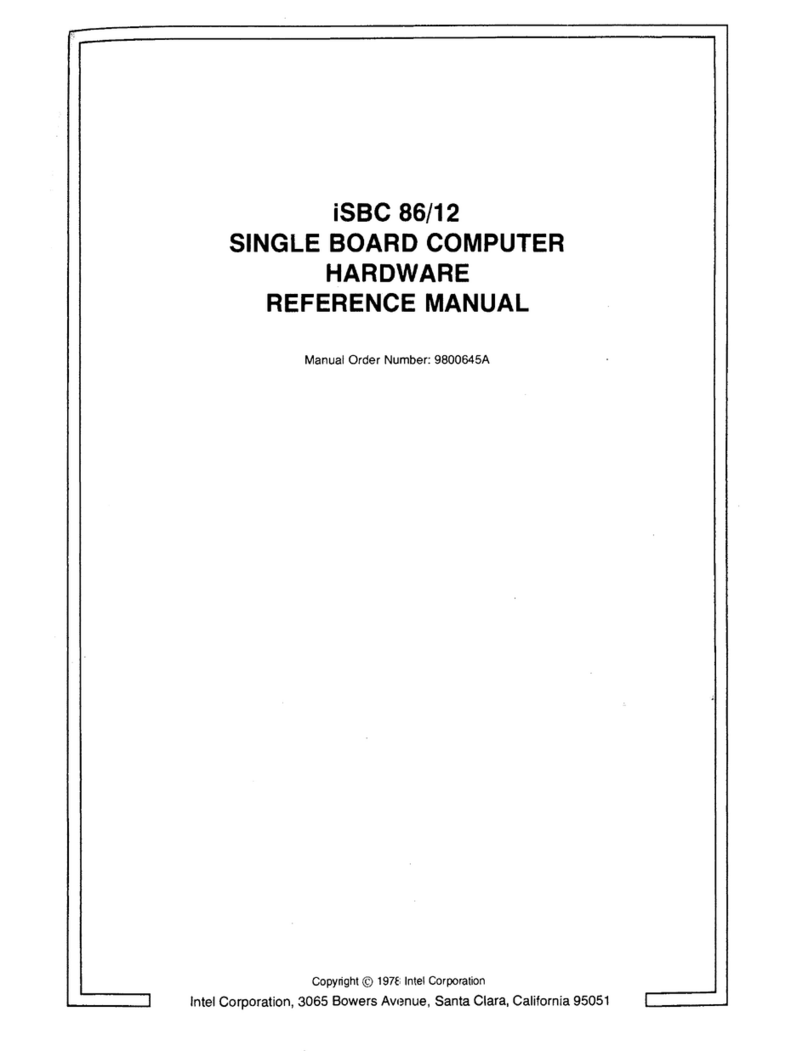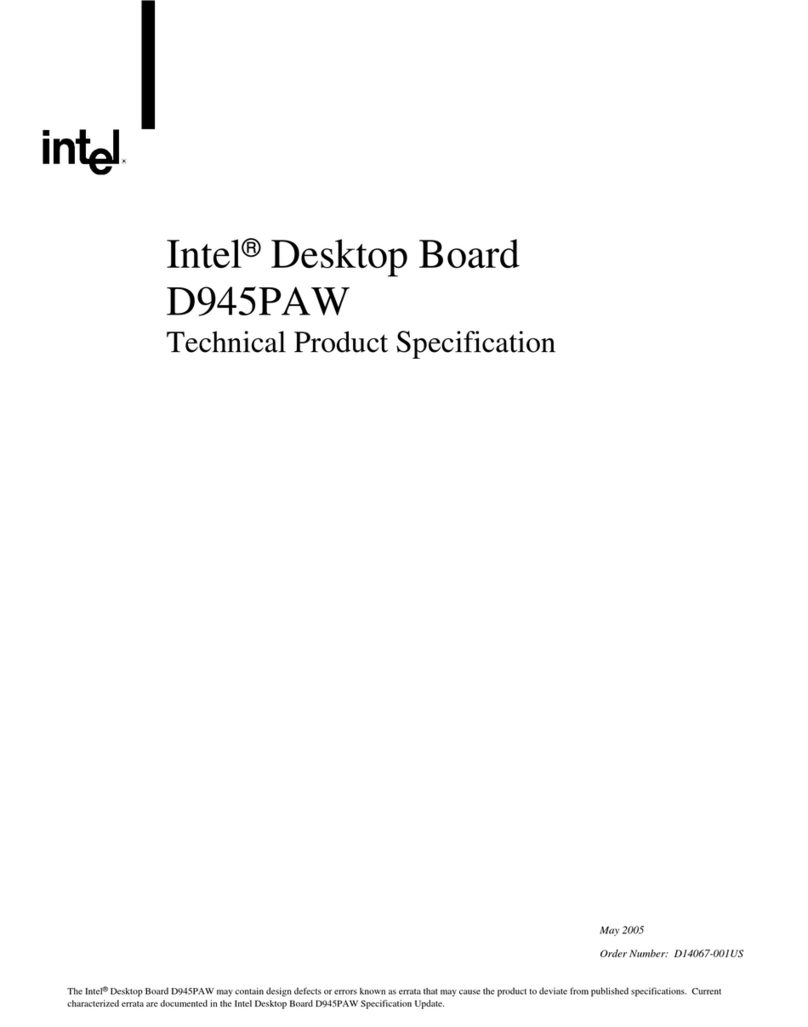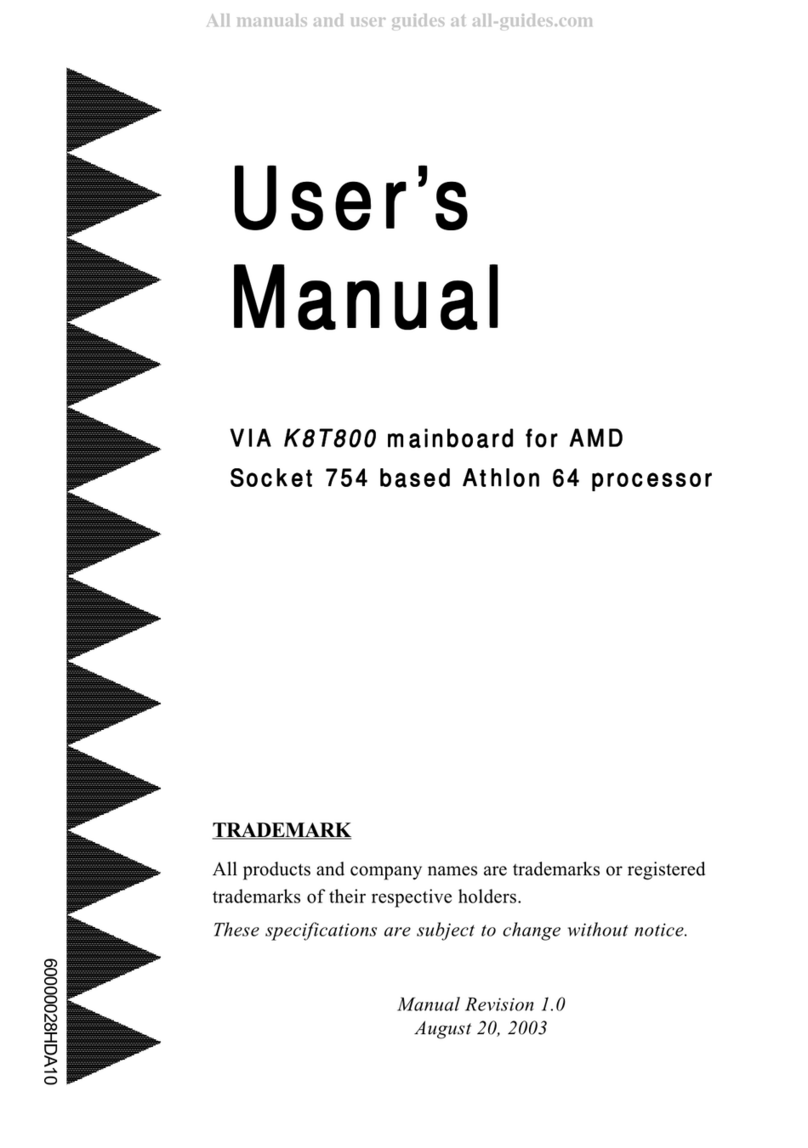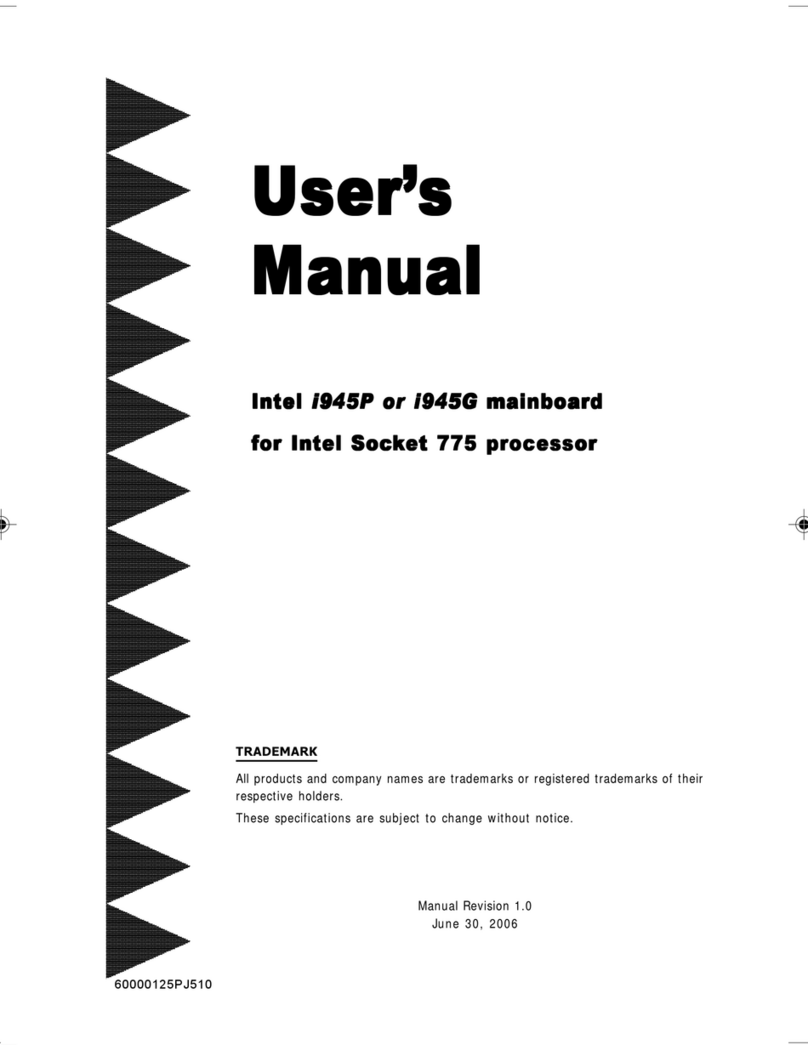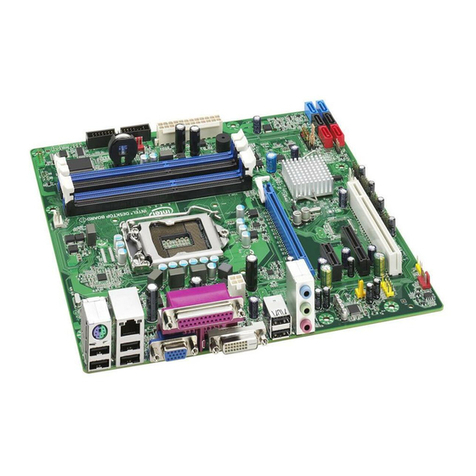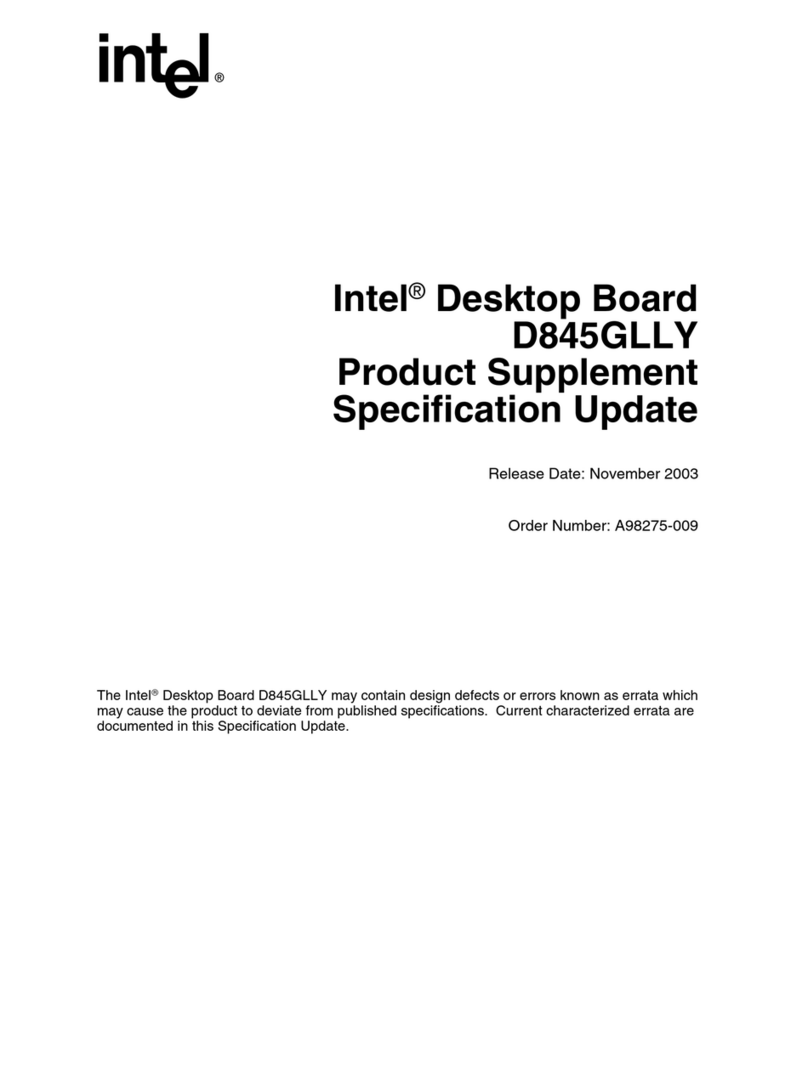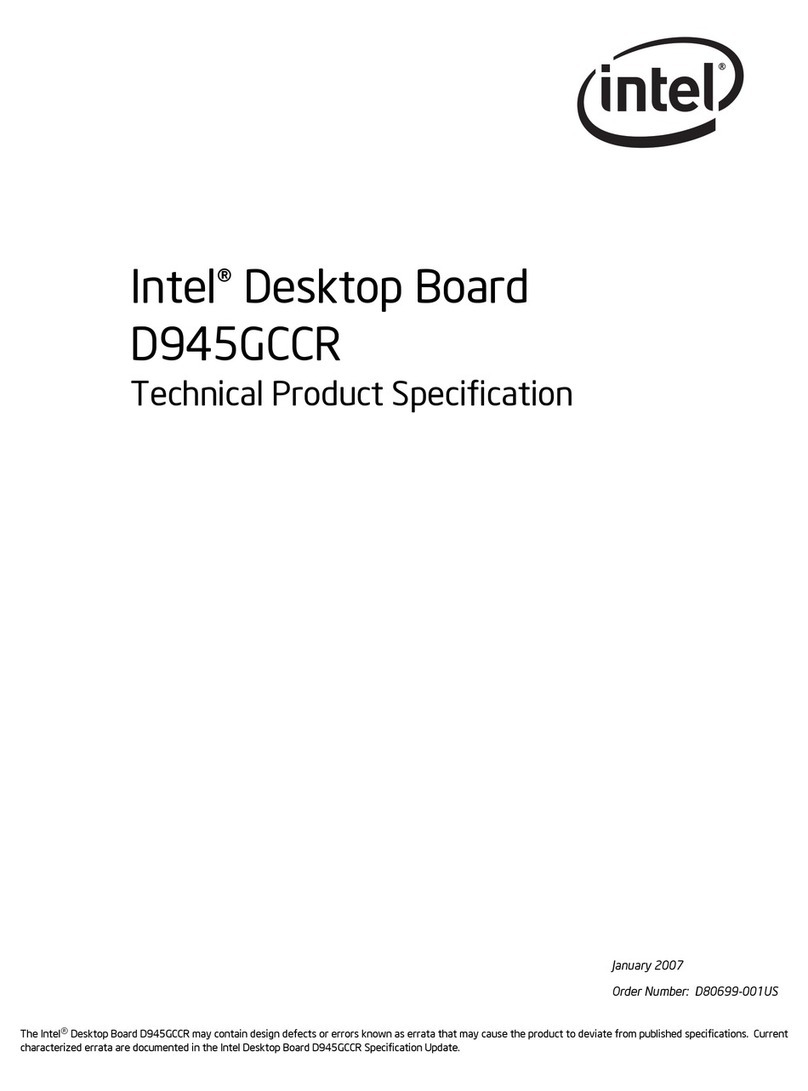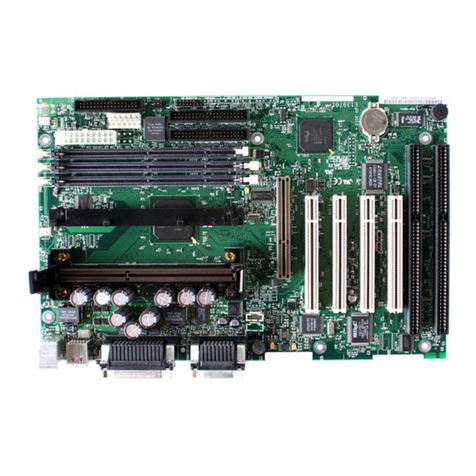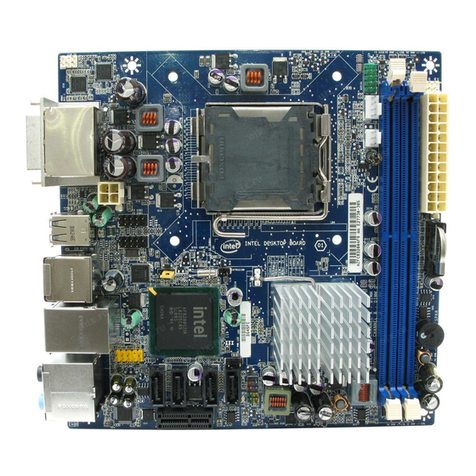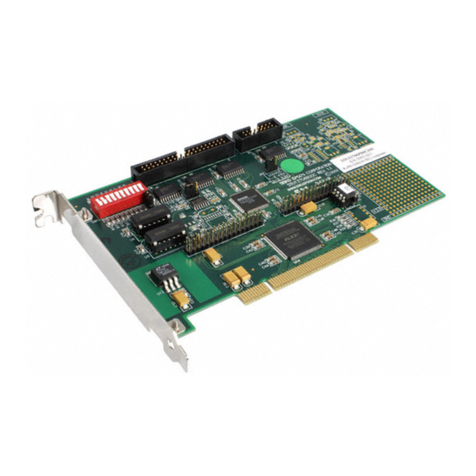
Intel Desktop Board DH67CF Product Guide
vi
2Installing and Replacing Desktop Board Components
Before You Begin ...............................................................................................27
Installation Precautions.......................................................................................28
Prevent Power Supply Overload ....................................................................28
Observe Safety and Regulatory Requirements.................................................28
Installing the I/O Shield ......................................................................................29
Installing and Removing the Desktop Board ...........................................................30
Installing and Removing a Processor.....................................................................31
Installing a Processor ..................................................................................31
Installing a Processor Fan Heat Sink..............................................................35
Connecting the Processor Fan Heat Sink Cable................................................35
Removing the Processor ..............................................................................35
Installing and Removing System Memory ..............................................................36
Installing DIMMs ........................................................................................37
Removing DIMMs........................................................................................39
Installing and Removing PCI Express x16 Graphics Cards.........................................39
Installing a PCI Express x16 Graphics Card ....................................................39
Removing a PCI Express x16 Graphics Card....................................................41
Connecting SATA Drives......................................................................................42
Connecting to the Internal Headers ......................................................................43
Front Panel Audio Header ............................................................................44
Chassis Intrusion Header .............................................................................44
Front Panel USB 2.0 Headers........................................................................45
Front Panel Header .....................................................................................45
Alternate Front Panel Power LED Header ........................................................46
Consumer IR (CIR) Headers .........................................................................46
S/PDIF Header ...........................................................................................47
Connecting to the Audio System...........................................................................48
Connecting Chassis Fan and Power Supply Cables...................................................49
Connecting a Chassis Fan ............................................................................49
Connecting Power Supply Cables ..................................................................50
Setting the BIOS Configuration Jumper .................................................................51
Clearing Passwords ............................................................................................52
Replacing the Battery .........................................................................................53
3Updating the BIOS
Updating the BIOS with the Intel®Express BIOS Update Utility.................................59
Updating the BIOS Using the F7 Function Key ........................................................60
Updating the BIOS with the Intel®Flash Memory Update Utility or the ISO Image
BIOS Update File ..........................................................................................60
Obtaining the BIOS Update File ....................................................................60
Updating the BIOS with the Intel Flash Memory Update Utility...........................61
Updating the BIOS with the ISO Image BIOS Update File .................................61
Recovering the BIOS...................................................................................62
AError Messages and Indicators
BIOS Error Codes...............................................................................................63
BIOS Error Messages..........................................................................................64
